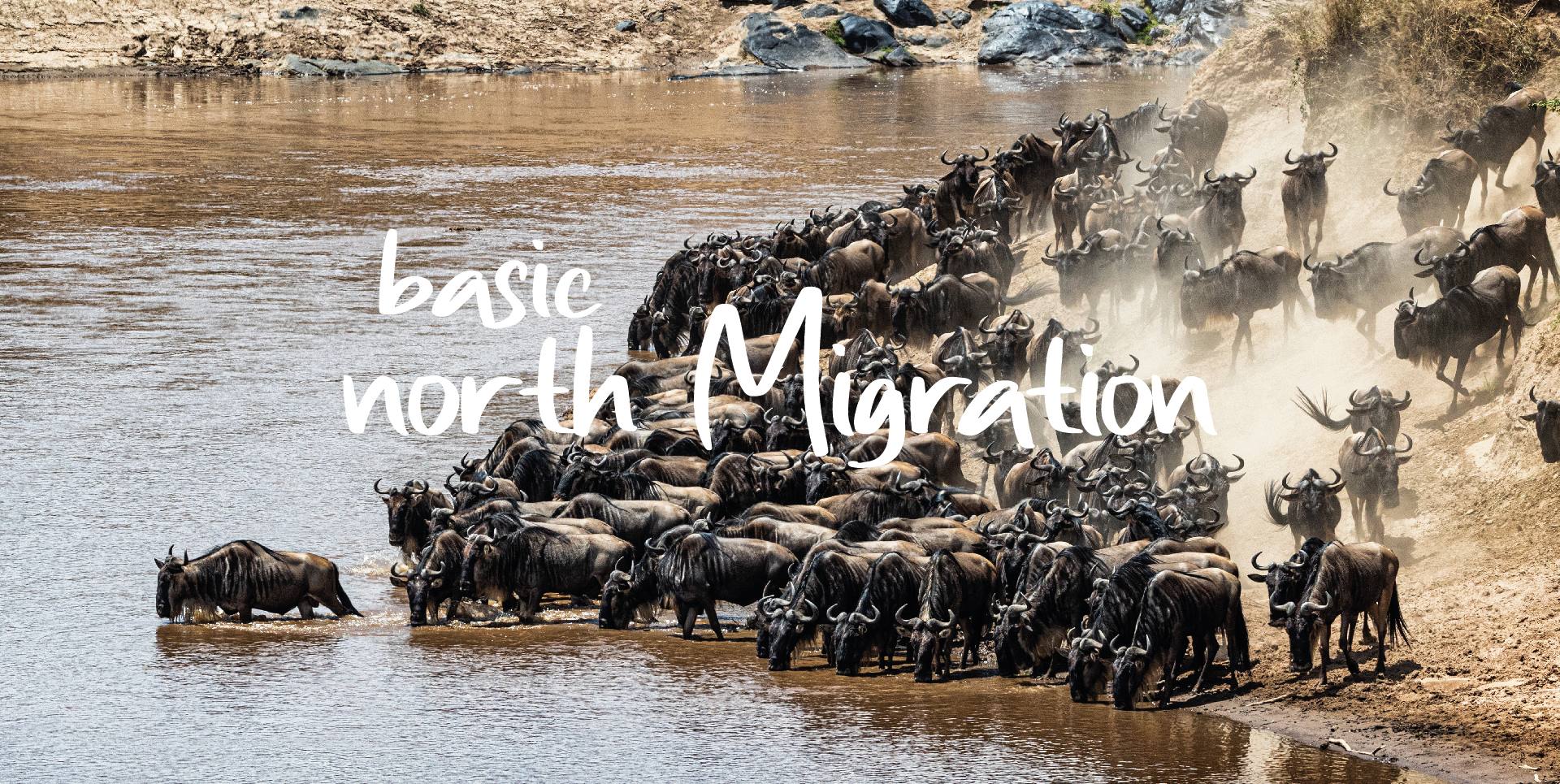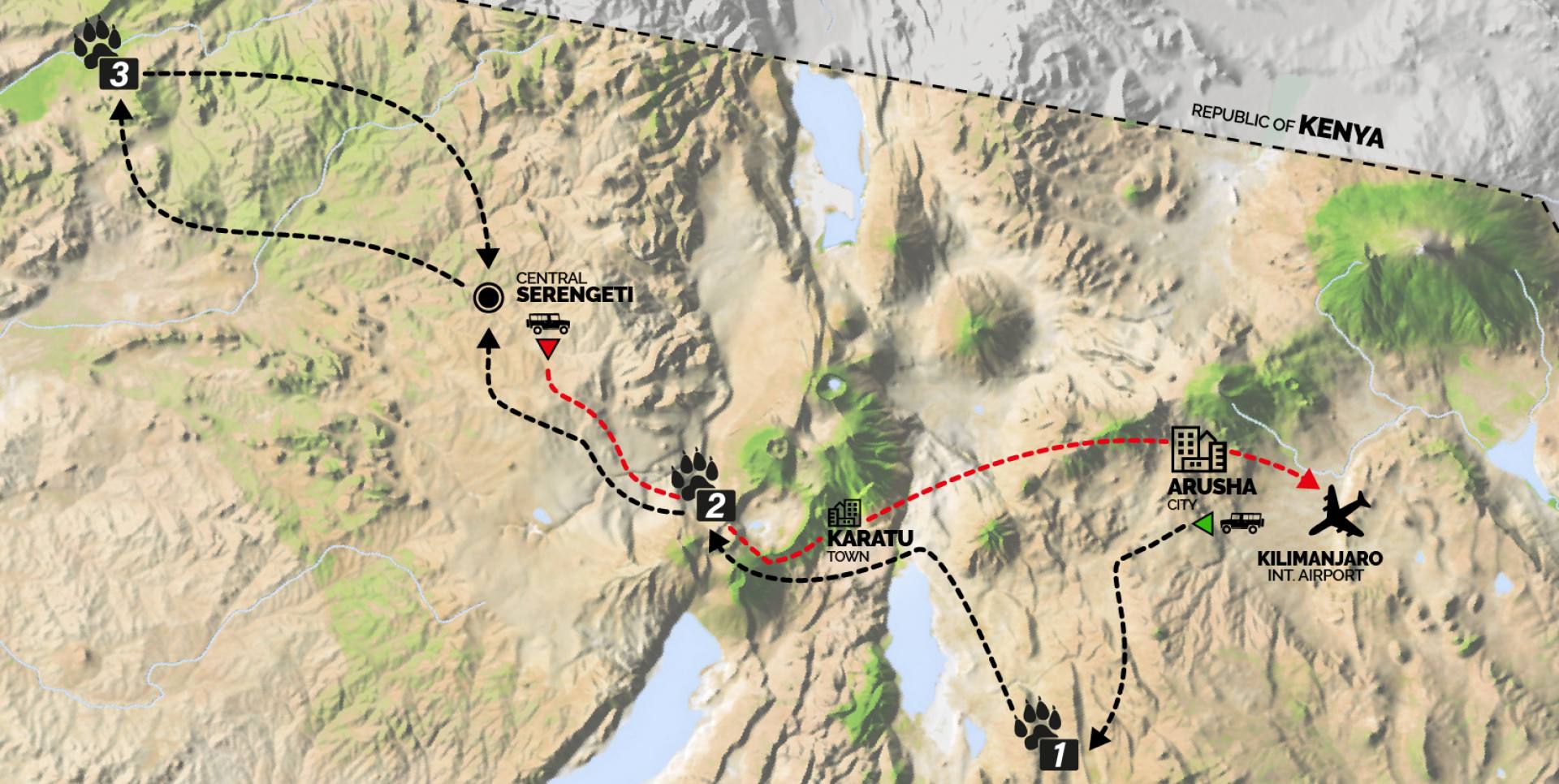The
Serengeti is considered the most famous national park in the world, the cradle of the
Great Migration, where one of the most impressive natural cycles on the planet is renewed every year: tens of thousands of ungulates move, driven by the primal instinct to survive, in constant search of new pastures. The landscape, dotted with large acacias and Kopjes (ancient rock piles), is an ideal habitat for big cats. As you move deeper into the heart of the Serengeti, you will understand why the name means, in the Maasai language, "boundless plain." Your safari will continue to explore the park until you reach the far north, where between July and October herbivores prepare to cross the Mara River. During the game drive there will be no shortage of opportunities for sightings of giraffe and elephant families, the large herds of lions, leopards, cheetahs, hyenas and smaller ones such as foxes, mongooses, honey badgers, jackals, along with more than 500 species of birds. The day will end with a transfer to the Lodge/Tented Camp for dinner and overnight stay.
The next day will be entirely devoted to researching one of the best-known natural spectacles, but also one of the fiercest in the animal world: river crossing by herbivores. The waters, in fact, are infested with crocodiles waiting for their prey. The lack of rainfall at this time forces herds to stop and graze in the Masai Mara, on the Kenyan border, and then return to the central Serengeti following the season's short rains. At this time, in the northern part of the park, the concentration of large predators is very high and, in a single day, sightings of cheetahs, leopards and herds of hyenas and lions could be counted by the dozens. In the afternoon, return to Lodge/Tented Camp for dinner and overnight stay.


